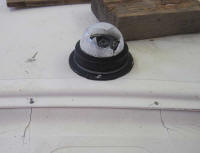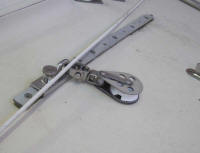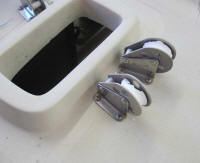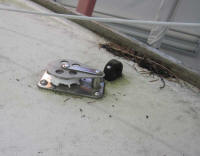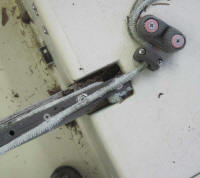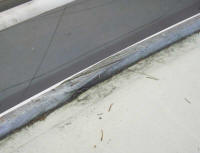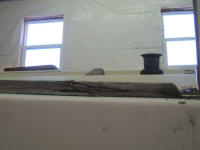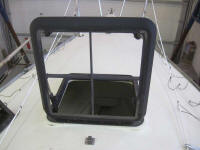
110 Cookson Lane | Whitefield, ME 04353 | 207-232-7600 | tim@lackeysailing.com
After moving the boat inside the shop late yesterday, I got to work removing the winter cover I'd installed shortly after the boat arrived in November, and then removed the mast from its storage place on deck to the shop floor.
The first order of business was to determine what needed to be done on the boat. The boat, still under original ownership, had been in storage and unused for about 20 years, but the goal was to get her back in the water and sailing. Over time, and exacerbated by the long period of non-use, certain things had deteriorated, but my general impression was that the boat was in surprisingly good condition overall, and particularly considering the recent past.
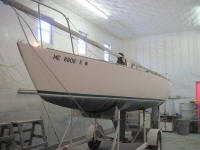
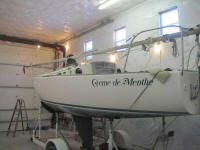
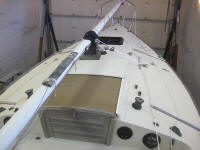
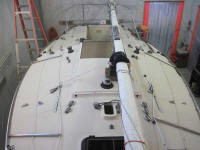
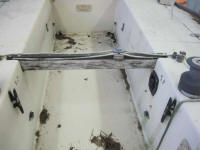
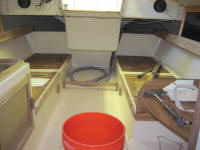
The list of potential items to refurbish or replace consisted mainly of a number of items of deck hardware that had been damaged by the ravages of time, including several deck blocks, a compass, the forward hatch (which was missing its plastic), and related items. I inspected all areas and made listings of the suggested replacements, which I sent to the owner separately for consideration.
In addition, there were a few areas of larger concern. During the boat's long storage, she had settled somewhat on the trailer, and just aft of the keel was a section where it appeared the hull had essentially "drooped" around the keel (i.e the keel had pushed up into the hull somewhat). While clearly visible and tangible, a survey conducted during the summer of 2010 had not determined any evidence of a significant problem in this area, despite the obvious hull contortion.
My initial thought was to see if this section of hull regained its proper shape once the boat was moved off the trailer and either better supported for storage, or ideally supported back in her natural element (the water). My initial inspection didn't immediately suggest that more drastic measures be taken, but time would tell.
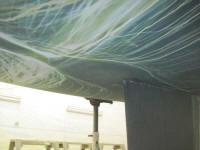
Another area of structural concern was the main bulkhead. It was clear through observation and testing that the lower portion of this bulkhead was partially damaged by moisture. While the plywood was still whole and more or less sound, there were punky areas, and clearly the outer layer or so of the original plywood had begun to delaminate in some areas.
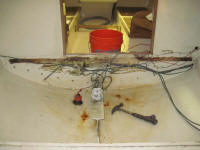
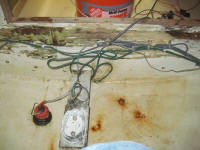
The mast, which had been stored at a boatyard separately from the boat during this time, had been significantly compromised by the long storage; years of dirt and debris had become encrusted on the side of the spar that had been facing up on the rack, and now this material had nearly become at one with the mast itself. In a couple test areas, I determined that most of the dirt could be cleaned off with some effort, but the paint beneath would never be perfect. In fact, at the top of the mast, the paint had begun to fail beneath its outer layer of dirt.
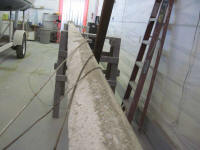
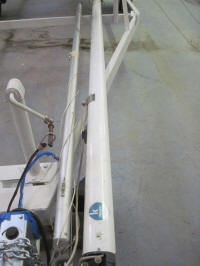
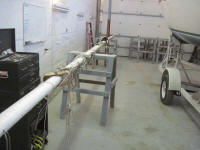
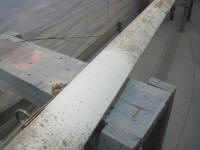
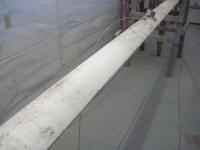
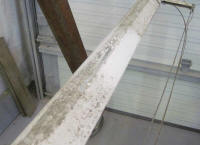
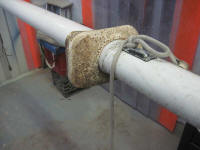
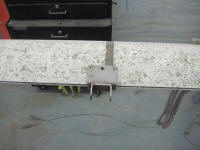
The mast was missing its headstay and one of the lower shrouds, and the remaining shrouds were in marginal condition, with various kinks, signs of corrosion here and there, missing sections of the turnbuckles, and, in one case, a bent turnbuckle thread. Replacement of all standing rigging appeared to be in order. Similarly, the old double lifelines were in marginal condition, and would need replacement.
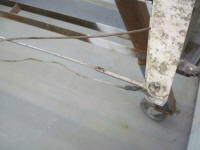
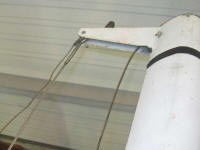
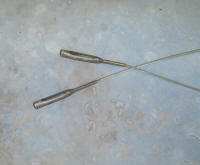
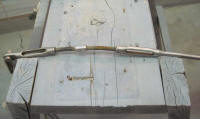
With the basic inspections complete, and a long list of notes, I spent the remainder of the day looking for appropriate replacement parts and arranging proposed work lists and estimates for the owner's perusal.
Total Time on This Job Today: 6.5 hours
